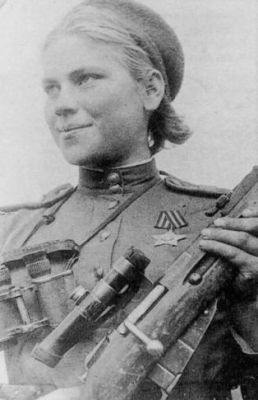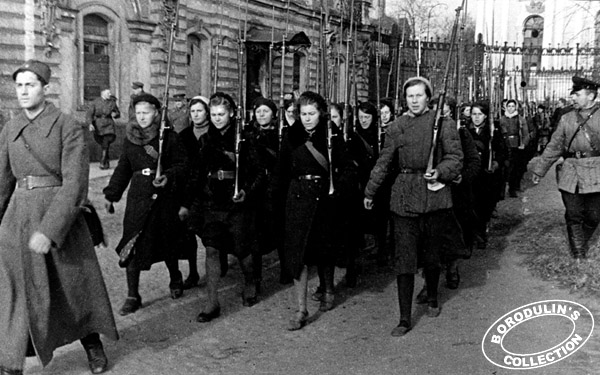Betty Grable (Ruth Elizabeth “Betty” Grable) (December 18, 1916 – July 2, 1973) was an American actress, singer, dancer, and pin-up girl whose sensational bathing-suit photo became the number one pinup of the World War II era. Grable was best known for her shapely gams (legs), which were showcased in all of her Technicolor musicals and famously insured by her studio 20th Century Fox for one million dollars per leg.
Born in St. Louis, Missouri to John C. Grable (the son of German and Dutch immigrants) and Lillian Hoffman (who was of Dutch, Irish and English descent), she was propelled into acting by her mother, who insisted that one of her daughters become a star. Her “Big Break” came when she returned to Hollywood to replace the injured Alice Faye in Zanuck’s film Down Argentina Way that was released in 1940, her first color film, and her star continued to rise as “The Screen’s Most Beautiful Blonde.” Betty Grable would make dozens of routine color musicals for Fox over the next decade and earn the studio over $100 million. She became the No. 1 female box office attraction in 1942, 1943, 1944 and remained in the Top 10 for the next decade.
In 1942, according to Larry Billman, “World War II was raging around the globe and escapist films were being manufactured in Hollywood as quickly as possible. Betty’s ingratiating freshness and beauty appealed strongly to the American G.I.s stationed overseas and her films were eagerly requested by the lonely servicemen… Although she never toured outside the United States for the U.S.O., Betty actively participated in War efforts, appearing at Camps across the country and at Bond Rallies where she auctioned off her nylons for thousands of dollars. Volunteering at the Hollywood Canteen, a club for servicemen staffed entirely by film stars and studio workers, she ‘Jitterbugged’ the night away with hundreds of soldiers, sailors and marines”. Her fan mail often reached 10,000 letters per week, and in 1942 she sent 54,000 autographed photos to the soldiers at Camp Robinson, Arkansas, who had sent her 54,000 letters. She dumped boyfriend-actor George Raft and married the bandleader Harry James July 5, 1943. A popular GI slogan during the war became “I want a girl just like the girl that married Harry James.” Their daughter Victoria was born March 4, 1944.
It was early in 1943 that Frank Powolny photographed the famous full-length back pose of Betty Grable looking over her shoulder. Many stories have been told about the origin of the most famous “Pin Up” picture in American history: that she was pregnant and tried to hide her stomach; or, that she was finished with the photo session and had turned her back to walk out of the studio, saying “That’s it!”; or, that she turned to smile at Darryl F. Zanuck who had entered the studio unexpectedly; or, that it was a costume shot for the film Sweet Rosie O’Grady released Oct. 1, 1943. Whatever the origin, the studio circulated floods of prints of the pose; most were dated “1943” and they became an instant hit. Unlike the French postcards of WWI secretly collected by American doughboys, the pinups of WWII were out in the open and sanctioned by the government. Photos of Rita Hayworth from the Aug. 11, 1941, issue of Life magazine were allowed to decorate airplane cockpits and army barracks. Life had coined the term “pinup” in the July 7, 1941, special issue on National Defense and anointed “Dottie” Lamour as the nation’s first official pinup girl. Betty Grable’s 1943 image would far surpass these in fame. According to Doug Warren, the Fox studio put “about five million copies of the famous pose in GI hands during the war, and the over-the-shoulder pose was the only one that was used for this purpose. Powolny believes the term ‘pinup’ was born with this Betty Grable photo. Betty was a representation of the girl-back-home for thousands of homesick young lads. For some, she may have been their only infatuation, the last girl they had ever lusted for, loved, or adored. She was company on a cold night, comfort at times of pain. Betty had an idea she was admired by the GIs, but had no way of knowing exactly how much. It was more than the sexy picture that enamored them of her; there was a magical wholesomeness and substance they saw beyond the curves of her figures. It was her very essence that was loved”
The New York Times wrote Oct. 21, 1943, about her in the film Sweet Rosie O’Grady that it offered “Miss Betty Grable of the legs divine in an hour-and-a-half long display of assorted poses, suitable for pin-up.” Zanuck released the film Pin Up Girl on May 10, 1944, to capitalize on the famous photo, and used the photo to publicize many of the wartime films of the Fox studio. Her yearly salary of $320,000 by 1947 made her the highest paid salaried woman in America. However, her contract with Fox ended in 1953 as the studio began to feature a new “blond bombshell” by the name of Marilyn Monroe. Betty moved to Las Vegas and made appearances on television and in nightclubs in the 50s, and on stage in the early 60s. She divorced Harry James in 1965 and suffered financial decline, but continued working on tours and stage shows, and doing TV commercials for Geritol, until her death from cancer in 1973.
Above was a composite quote from the following:
http://en.wikipedia.org/wiki/Betty_Grable
http://history.acusd.edu/gen/WW2TimeLine/bettygrable.html
SEE ALSO:
http://grableonline.tripod.com/
http://www.doctormacro.com/Movie%20Star%20Pages/Grable,%20Betty.htm
http://www.bombshells.com/grable/
http://www.geocities.com/Hollywood/Hills/2440/index-g.html




Betty Grable - nice gams.


































































